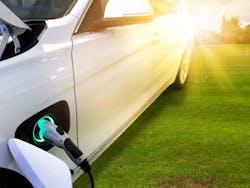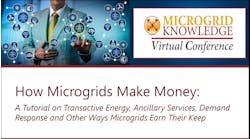Bipartisan Group of US Lawmakers Introduce Extension of Electric Vehicle Tax Credit
Electric vehicles got a nice jolt on Wednesday as a bipartisan group of US lawmakers introduced a bill to update and extend the federal electric vehicle tax credit.
The way the law is written now, electric vehicle buyers get a tax credit of $7,500 but that deduction phases out once a carmaker sells 200,000 of them. Under the new bill, those manufacturers could sell 400,000. The big winners are Tesla and General Motors, which have had their tax credit offerings curtailed because of high sales.
“Electric vehicles are cleaner, cheaper to operate and maintain, and allow customers to fuel at home with domestic energy,” says Jason Hartke, who is the president of the Alliance to Save Energy, in a statement.
“Study after study has found that tax incentives are working to make them accessible to more Americans and encourage their sales,” he adds. “As we’re seeing in states like Tennessee, Michigan, Georgia, and California, the market growth is leading directly to investment in manufacturing and job creation.”
The measure is sponsored by Republican Senators Lamar Alexander of Tennessee and Susan Collins of Maine as well as Democratic Senators Debbie Stabenow of Michigan and Gary Peters of Michigan. Tesla and GM have seen their tax credit offerings cut in half.
The White House has proposed eliminating the tax credit altogether, maintaining that it would save money and that it also creates an uneven playing field. The measure is estimated to cost about $11 billion.
Right now, there’s about 2 million electric vehicles on the road, globally. About 360,000 were sold last year in the United States. The Edison Foundation is predicting electric vehicles sales to total about 19 million by 2030. Growing markets in China, India and the Middle East are expected to increase oil demand by 12% between now and 2035, adds Wood Mackenzie. But the advisory firm says that these same locations will be the ones to widely employ electric cars.
Electric vehicles are expected to accelerate development of microgrids as fleet owners, such as companies that rely on trucks to deliver product, seek ways to manage new electric demand peaks. Many new microgrid projects are designed to include vehicle charging stations.
“The automobile industry might be a mature market, but that is not the case for electric vehicles,” U.S. Commerce Secretary Wilbur Ross says. “In fact, this type of technological transformation is occurring in virtually every industrial sector.”
He says the United States is a good place to build such cars and to make the batteries that will run them, pointing to the South Korean conglomerate SK Group. It just broke ground north of Atlanta to build a lithium-ion battery factory. It plans on investing $1.7 billion in the facility that will employ 2,000 people.
The bill to extend the credit is backed by car makers and environmentalists alike. It may be used as a bargaining chip during the impending budget battles, as has been the case with the production tax credit given to wind and solar developers.
Track news about microgrids and electric vehicles. Subscribe to the free Microgrid Knowledge newsletter.








